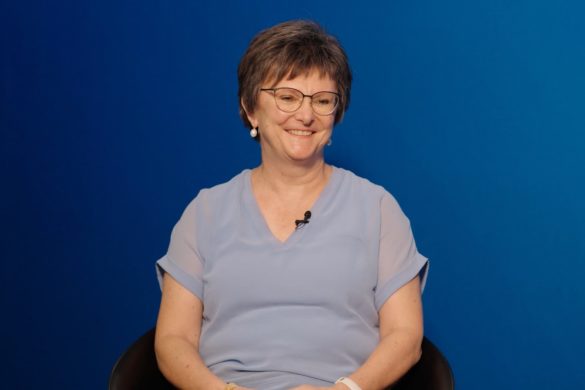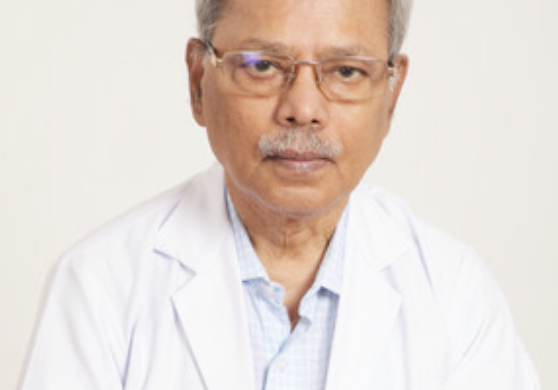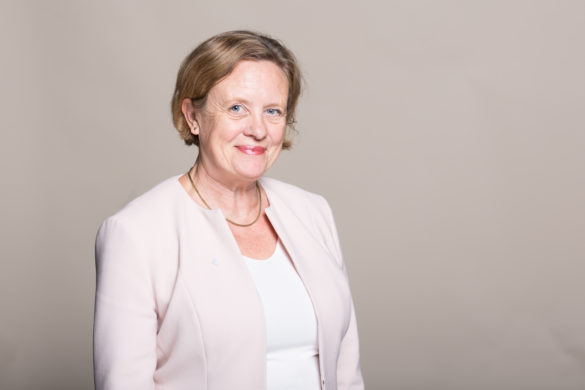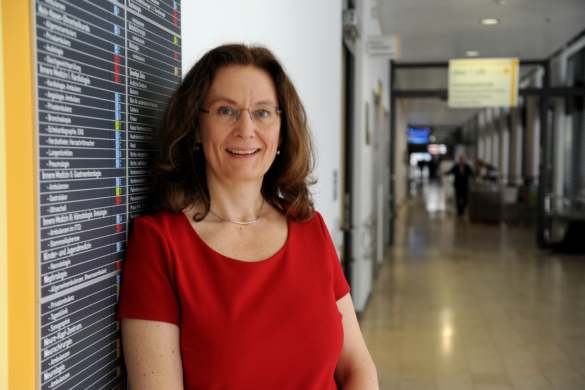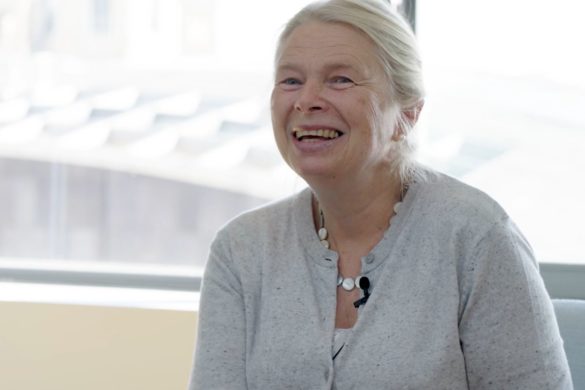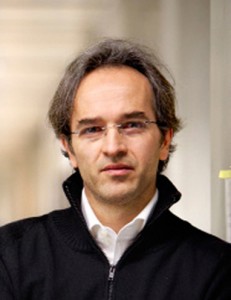 Neuropenews is pleased that the interview with Professor Martino is published now that the Nobel Prize was received by John Gurdon and Shinya Yamanaka. It is important that together with the relevance given to stem cell therapy, patients are also cautioned about the actual limitation of this approach and about the fact that unethical medical groups may – without any clinical result – profit from the glamour.
Neuropenews is pleased that the interview with Professor Martino is published now that the Nobel Prize was received by John Gurdon and Shinya Yamanaka. It is important that together with the relevance given to stem cell therapy, patients are also cautioned about the actual limitation of this approach and about the fact that unethical medical groups may – without any clinical result – profit from the glamour.
Gian Luigi Lenzi: Going into the web, it is easy to find sites that are offering neurological patients a therapy based on stem cells, promising improvement and also full recovery. What is your comment ?
Gianvito Martino: For some years now we have been confronted with daily ads touting miraculous cures based on stem cells for any disease, from baldness to Alzheimer’s disease. This situation increases the distress of sick people who, while having an urgent need to know the real hope of access to truly effective therapies, perceive lack of appropriate information channels to help them choose consciously and informedly.
GLL: It looks like stem cells are a therapy for every kind of disease?
GM: It’s good to know, first, that there aren’t stem cells for everything and everyone and that, as always, it is wrong to generalize. In some cases the stem cells already exist and are used routinely. Only in Italy, more than four thousand per year of bone marrow transplants are carried out to treat blood cancers. Over the past twenty years, the skin stem cells have treated thousands of serious burns all over the world, as well as many people (more than two hundred only in Italy) with vision problems caused by damage to the cornea.
GLL: What about other diseases, in particular neurological diseases?
GM: In the abovementioned areas the data are real and reliable, but the evidence of a real healing power of stem cells in other contexts, such as neurological disorders, are not clear, since the results expressed in the experiments are neither solid nor unambiguously interpreted, and require further testing and confirmation. It is worth noting that, as paradoxical as it may seem, these are the situations “shout” by the media, that in doing so induce miraculous expectations.
GLL: In many instances these “out-of-the-academy” researchers claim that their findings are blocked by obtuse academic power.
GM: We often hear about an alleged ideological barrier by the international scientific community in the use of stem cells, as well as for other procedures, such as the CCVI for MS. However, when it comes to a cautiously reasoned consideration, any treatment before being effective, must prove safe, and above all else should not jeopardize the patient’s life. An example: in March 2009 the news reported an Israeli boy suffering from a severe disease of the immune system which, four years after receiving multiple transplants of stem cells in Russia, developed a brain tumor originated right from the stem that had been injected. Since then, many other ‘accidents’ have been made public.
GLL: In general, laymen do not understand if there is one kind or many different stem cells, and if their utilization for a particular disease is related to a particular brand of stem cells, or if they are “totipotent”.
GM: If you consider the experience gained, it is enough to identify and grow in the laboratory the various types of stem cells to be able to treat people in need of care. Nor can we talk about it in a generic way, without dwelling on the fact that there are profound differences between the different stem cells, as well as between the various diseases, and that any therapeutic approach must be disease-specific. If stem cells are used to treat blood cancers, this does not mean that the same cells would be equally effective in treating brain tumors. We need, in effect, to admit that even today we have little understanding of basic mechanisms that regulate the functioning of these cells.
GLL: Stem cells are widely studied in labs. What is the state-of-the-art for their utilization for neurological patient’s care?
GM: There are many questions to be answered before we see a large-scale use of these new therapies. What are stem cells used? Where to pick them up? Embryonic, adult, fetal? From the heart, blood, fat?
Embryonic cells give less rejection problems, but can give rise to tumors. Adult cells are devoid of toxicity but in certain cases, such as the brain, it can obtain only minimal quantities, and in any case only operate in a partial and transient way. Finally, there is the possibility of using embryonic cells “rejuvenated” – induced pluripotent stem cells – similar to those embryonic, but obtained from adult cells processed in the laboratory.
GLL: You are speaking of “large-scale” utilization. That means that there is a “small scale” utilization? Phase 2 or 3 trials in neurological patients? Are there some preliminary findings?
GM: Hopefully, things are moving faster than expected. There are already phase I or phase I/II trials, approved by the regulatory agencies, in some neurological disorders based on the transplantation of hematopoietic, mesenchymal and neural stem cells. Main goal of these trials is to evaluate the safety of these treatments; only when safety is proven, efficacy will be tested. Those disorders are: ischemic stroke, amyotrophic lateral sclerosis, multiple sclerosis, Batten’s disease, Pelizaeus–Merzbacher disease, and traumatic spinal cord injury. It will take years to assess both safety and efficacy of these treatments, thus the large-scale use of these therapies requires much more time.
GLL: What about the route of stem cell transplantation?
GM: In the case of stroke, administration directly into the damaged area of the brain is undoubtedly the best way; but in diseases such as multiple sclerosis or Alzheimer’s Disease, where the damage has spread throughout the brain and spinal cord and brain surgery is too risky and complicated, how can we intervene? Recent evidence suggests that we might get through the blood or the cerebrospinal fluid, but this hypothesis remains to be further validated. For instance, we know that the lungs block practically all stem cells injected intravenously and heterotopic transplantation (e.g. blood stem cells into the brain) might cause serious side effects such as tumor formation.
GLL: How do the stem cells work, once arrived into the affected organ, i.e. the brain ?
GM: It has crept in the general opinion, quite perfunctory, that stem cells rebuild tissues by replacing damaged cells, but recent studies allow us to understand the reason of failures recorded to date, showing that stem cells act not so much in rebuilding the damaged tissue, as to avoid progression of the damage. It is likely, therefore, that these cells are more useful in the early stages of a disease than in those later, when it is now in the presence of extensive damage and irreversible.
In essence, to turn anecdotal experiences or promising preclinical results in safe and effective therapies, there is no need of ‘cry of hope’ travels; just as it serves the public will side in favor or against something or someone. We need to plan rather carefully our research attempts, to foster ever closer dialogue between basic research, to use clinical investigation protocols internationally validated and comparable, and to carefully analyze the results already obtained – especially negative, often unspoken thanks to the unwritten rules that the scientific community has mistakenly given – and, last but not least, to disclose “subheading”, with moderation and respect.
GLL: What is the future of stem cell therapy in neurological diseases?
GM: There is still a long way to go before the stem cells become a useful and effective therapeutic tool, and this pathway, just because it is full of unknowns, it must be done in a strict and controllable manner where common rules that apply may not be waived. The flourishing world of so-called specialized centers for therapies based on stem cells, which do not undergo strict quality control and often make their own profit the only reason for being, certainly does not facilitate this task.
It would be important that these considerations were taken into account not only by neurologists but by the entire community and that new legislative tools should be developed to protect the sick, made vulnerable by the need of care and hope and by the poor results of the “normal” available therapies.
It is these issues that make the boundary between science and consciousness maybe transient, and it is here that citizens need to be protected and escorted to make an informed choice.
GLL: Which recommendation could you suggest for health authorities?
GM: We must strive to increase investment in this sector, mainly using public funds to avoid drifts linked to profit. All this takes time, it is true, but we must remember that if the first bone marrow transplant was carried out even at the end of the nineteenth century; only since the eighties of last century it has become everyday medical practice.
This does not mean that it will take several decades before we see the large scale application of therapies based on the use of stem cells. However, it means that we can not expect to solve overnight the complex problems that currently we are confronted with.
In summary, until we have certainty based on the basic mechanisms that regulate stem cells function, all triumphalism is misplaced, and internet offers have a high risk to be a robbery only.
Gianvito Martino received his medical degree from the University of Pavia, Italy in 1987. In 1991, he completed his residency in neurology at the same university. In 1990, he was a visiting scientist at the Department of Neurology of the Karolinska Institute (Stockholm, Sweden); from 1991 to 1992, he held the position of research associate at the Department of Neurology of the University of Chicago (Chicago, IL, USA); from 1992 to 1997, he worked as senior scientist at the Neuroimmunology Unit of the San Raffaele Scientific Institute (Milan, Italy). From 1997 to 2008 he has served as head of the Neuroimmunology Unit of the San Raffaele Scientific Institute where, since 2008, he acts as Director of the Division of Neuroscience. In 2009, he was appointed President of the Italian Neuroimmunology Society (AINI) and, in 2010, President Elect of the International Society of Neuroimmunology. From 2000, he acts as scientific coordinator of the European School of Neuroimmunology (ESNI). Prof. Martino is co-author of more than 200 original articles and book chapters. His scientific interests range from the elucidation of the pathogenic mechanisms of immune-mediated central nervous system disorders to the development of gene and stem cell-based therapies for the treatment of these disorders




